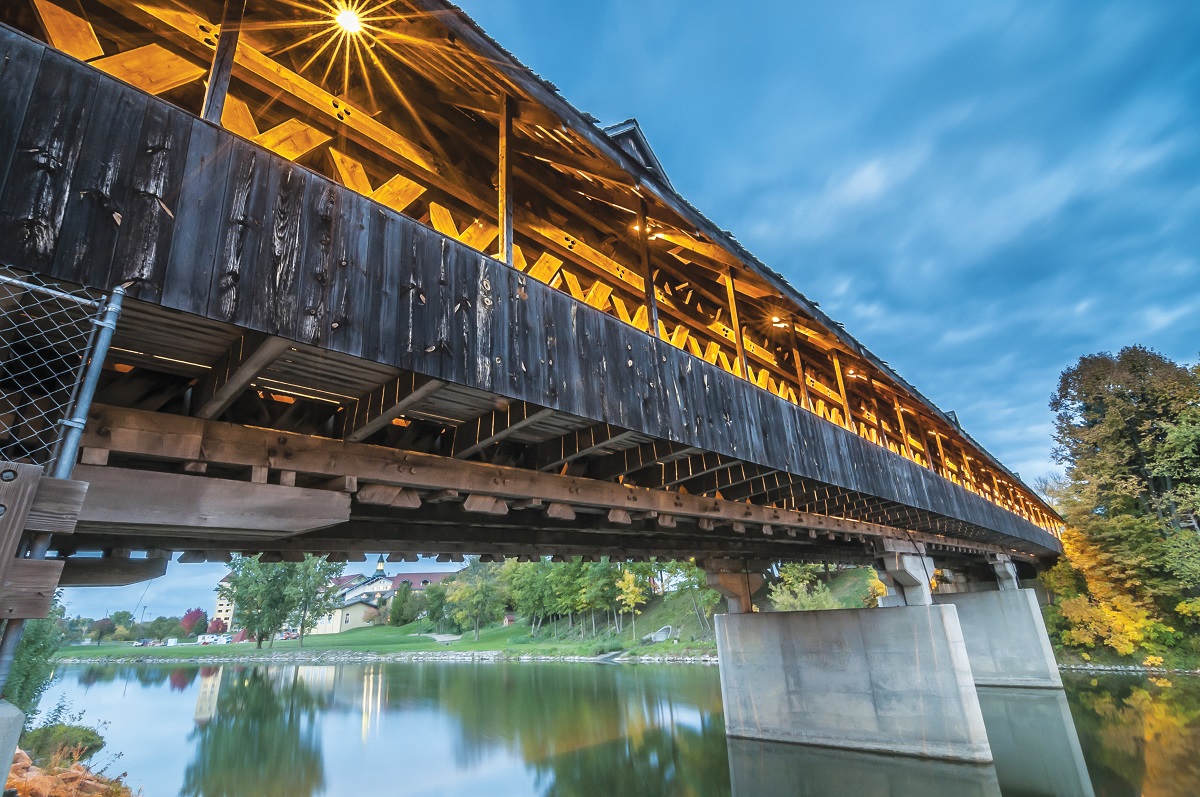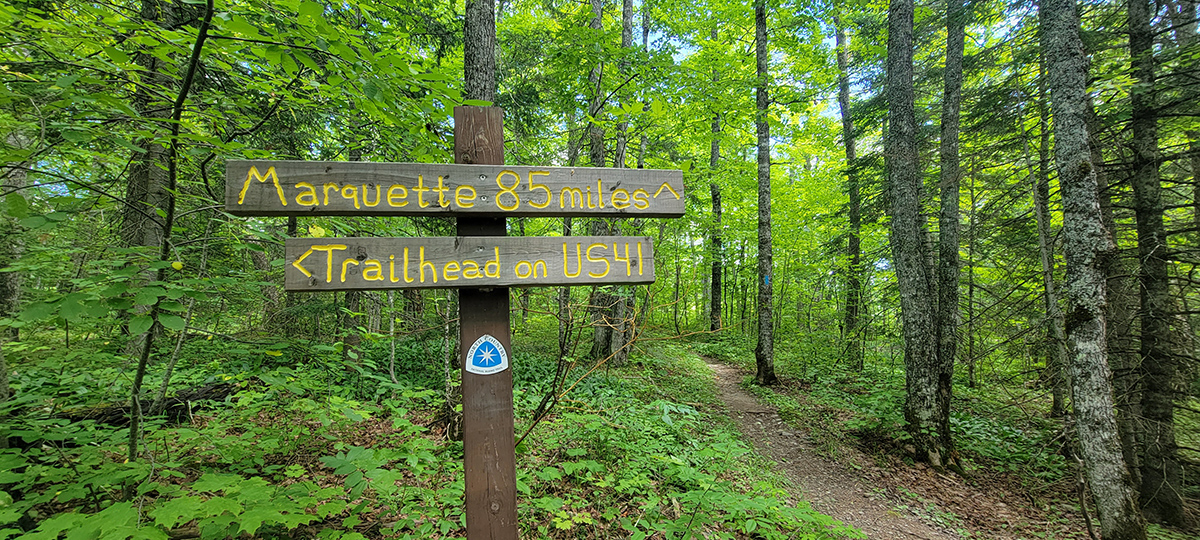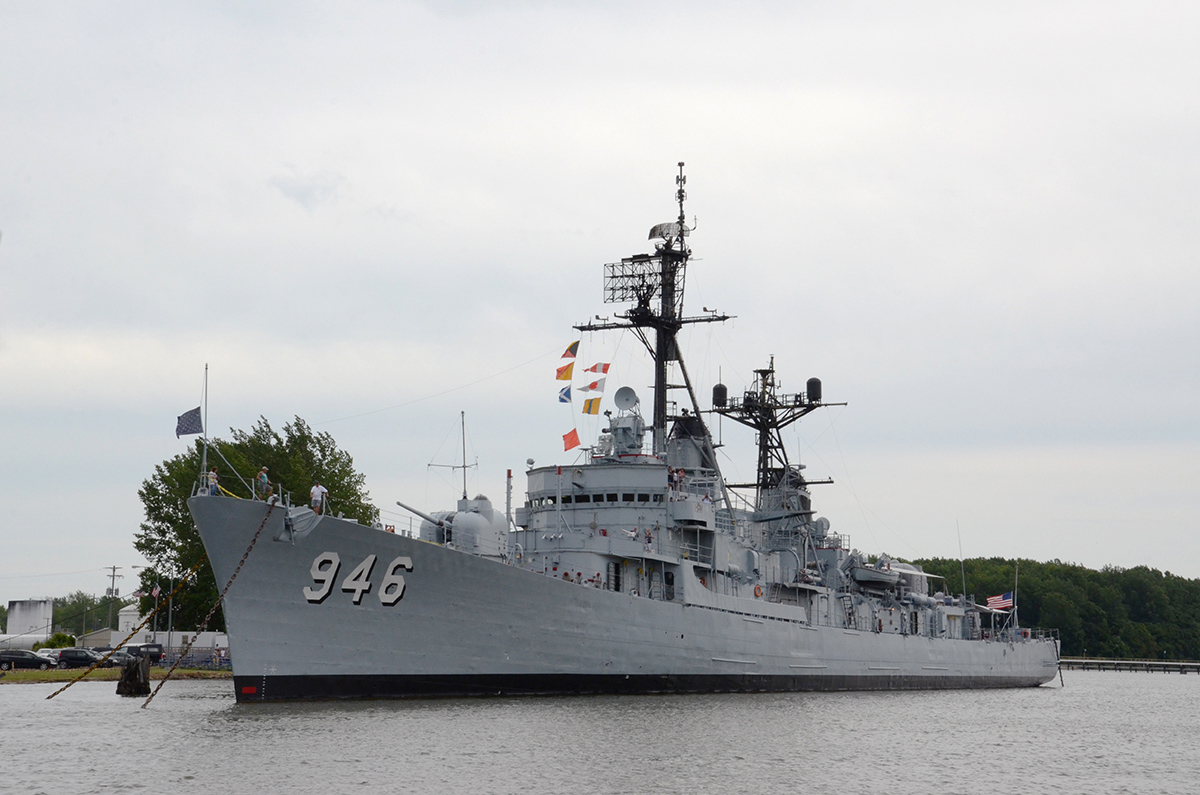WRITER | JULIE FORD
PHOTOS | ST. JOSEPH COUNTY HISTORICAL SOCIETY OF MICHIGAN
Mention “covered bridge,” and idyllic scenes of a New England landscape dotted with covered bridges typically come to mind. While Pennsylvania and Ohio boast the most in the US, Michigan also has covered bridges to explore by vehicle, bike, or on foot. Several are historical, a few are moderately new, and one, in particular, is downright curious.
In the early to mid-1800s when many US covered bridges were constructed, timber was used to support horse-led or horseless carriages across rivers. Exposed to sun, wind, rain, and snow, timber roads needed protection to last; they needed a cover. The engineers of the day, called bridge wrights, invented and patented fascinating truss designs still used today. The National Society for the Preservation of Covered Bridges details many of these on its website.
TAKE A DRIVE
The Langley Covered Bridge near Centreville and the Fallasburg Covered Bridge in Lowell are Michigan’s only two surviving historic bridges through which one can still drive a vehicle. Sadly, arsonists destroyed Whites Covered Bridge in Ionia County in July 2013. Built in 1867, it was Michigan’s oldest surviving bridge and had maintained constant use until its end.
Spanning the St. Joseph River 30 minutes south of Kalamazoo and four miles north of Centreville is the Langley Covered Bridge. Built in 1887, the Howe truss design of the single-lane bridge stretches 282 feet. In 1965, it was registered as a Michigan Historic Site. The setting is peaceful; it’s surrounded by farmland and an easy drive from US 131.
In Lowell, the Fallasburg Covered Bridge is 100 feet long and crosses the Flat River. Built in 1871 using the Brown truss design, it’s believed this bridge replaced one built in 1840 that was destroyed by ice jams and flooding. Repairs have been made throughout the years to maintain its integrity for vehicle travel. The bridge was dedicated in 1959 as a Michigan Historic Site and is listed on the National Register of Historic Places as part of the Fallasburg Village.
Frankenmuth’s iconic Holz Brücke Covered Bridge carries vehicles, carriages, and strolling tourists over the Cass River between the town and the Bavarian Inn. At 239 feet in length, the Town lattice truss bridge was built in 1979 by New Hampshire bridge builders. Built on land, oxen were used to pull the 230-ton bridge into place at a speed of three inches per minute. Vehicles travel the covered road while pedestrians use a walkway on each side of the bridge to enjoy viewing the river below.
Within the Sleeping Bear Dunes National Lakeshore along the 7.4-mile Pierce Stocking Scenic Drive is the Pierce Stocking Covered Bridge. The Stringer truss bridge was originally built in 1971 by area lumberman Pierce Stocking and was later renovated in 1986 by the National Park Service after porcupines chewed its sides. There is a fee to enter the park and cyclists can also enjoy the ride, but it is recommended for experts only, due to the steep terrain.
RIDE A BIKE
Just north of Big Rapids in Reed City, along the 92-mile Fred Meijer White Pine Trail State Park between Cadillac and Comstock Park, is the Reed City Covered Bridge. Originally built in 1880, the 151-foot covered bridge over the Hersey River is a railroad trestle and a vestige of the Grand Rapids and Indiana Railway of the late 1800s.
Completed in 1871 and operational until 1970, the Kalamazoo and South Haven Railroad is now the popular 33.5-mile Kal-Haven Trail. Spanning the south branch of the Black River northeast of South Haven, the David F. Nichols Covered Bridge is a 120-foot Stringer truss bridge that was built in 1988 using an existing train trestle. The Kal-Haven trail is an easy ride on a limestone/slag surface and a popular destination for cyclists.
GO FOR A WALK
At the entry point of Michigan State University’s W. K. Kellogg Experimental Forest in Augusta is the Augusta Covered Bridge. Engineered in 1973 with Stringer trusses spanning the gently flowing Augusta Creek, the 32-foot shuttered bridge welcomes the public to walk the trails of a sizeable sugar bush from dawn to dusk. In early spring, visitors pay $1 to watch sap turn to syrup in the sap house just a few yards from the bridge.
Originally erected in 1867, the Ada Covered Bridge spans 125 feet over the Thornapple River. The Brown truss bridge was closed to traffic in 1930 and received extensive repairs in 1941. When a fire destroyed the bridge in 1979, the Amway Corporation immediately rebuilt it. It is a Michigan Historic Site, listed on the National Register of Historic Places, and connects the Village of Ada to the local baseball diamonds of Leonard Field.
In 1937, Henry Ford discovered the Ackley Covered Bridge in southwestern Pennsylvania and had it moved to Greenfield Village piece by piece, saving it from demolition. The 75-foot Burr truss bridge was erected in 1832, and today thousands of visitors have traveled over the bridge. On two special weekends, Father’s Day and the Old Car Festival in September, visitors can purchase tickets to travel over the bridge in a Model T.
A curious must-see is the collection of 17 intricately detailed concrete bridges, including a covered bridge at McCourtie Park in Somerset Center near Hillsdale. The surreal artwork is part of a 42-acre estate whose owner graduated from the University of Michigan in 1891, made his fortune in oil, and later founded a cement company.
Whether a covered bridge is close by or across the state, a visit is worth the effort. Imagine…you can ride a bicycle along the same route where steam locomotives carried Victorian-era passengers, listen to a river while noticing how the timber road feels underfoot, or drive the car over a bridge that horse and buggy first traveled. What better way to experience the fall splendor of Michigan than through a tour of our covered bridges?
For more information, readers can visit DaleJTravis.com. Travis has worked for years to compile an extensive list of Michigan’s covered bridges.








